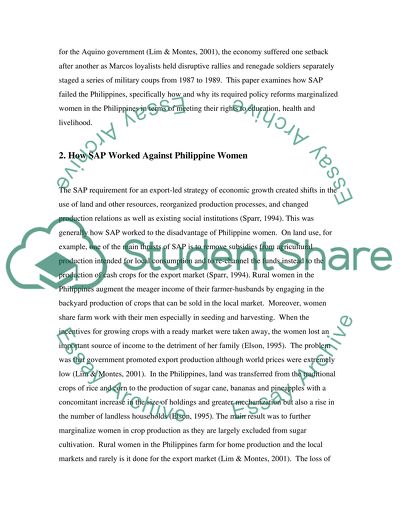Cite this document
(How Structural Adjustment Programs Impacts Women in the Philippines Case Study, n.d.)
How Structural Adjustment Programs Impacts Women in the Philippines Case Study. https://studentshare.org/gender-sexual-studies/1509793-the-impact-of-structural-adjustment-programs-on-women-in-the-philippines
How Structural Adjustment Programs Impacts Women in the Philippines Case Study. https://studentshare.org/gender-sexual-studies/1509793-the-impact-of-structural-adjustment-programs-on-women-in-the-philippines
(How Structural Adjustment Programs Impacts Women in the Philippines Case Study)
How Structural Adjustment Programs Impacts Women in the Philippines Case Study. https://studentshare.org/gender-sexual-studies/1509793-the-impact-of-structural-adjustment-programs-on-women-in-the-philippines.
How Structural Adjustment Programs Impacts Women in the Philippines Case Study. https://studentshare.org/gender-sexual-studies/1509793-the-impact-of-structural-adjustment-programs-on-women-in-the-philippines.
“How Structural Adjustment Programs Impacts Women in the Philippines Case Study”. https://studentshare.org/gender-sexual-studies/1509793-the-impact-of-structural-adjustment-programs-on-women-in-the-philippines.


